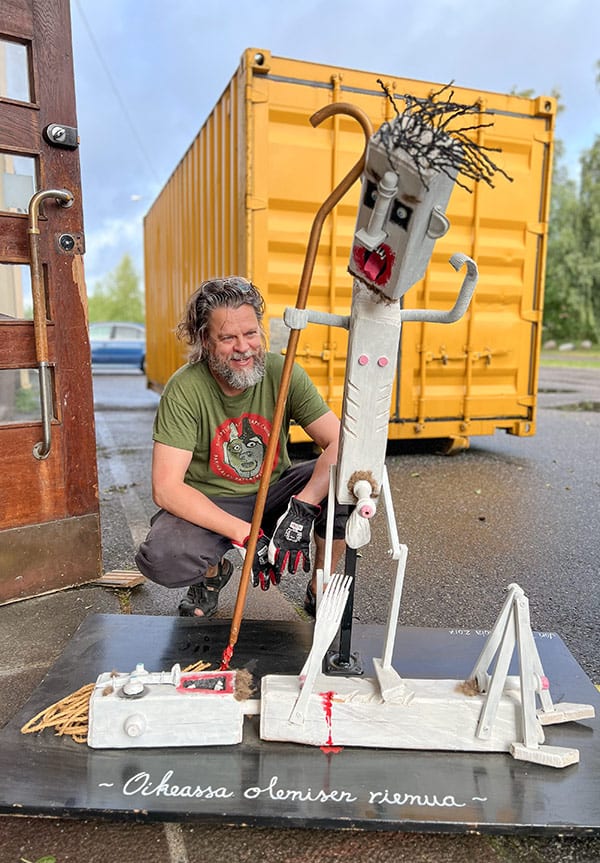Jori Tapio Kalliola
Rauma (1968)

Human pictures of wood and other materials
Jori Tapio Kalliola is an ITE artist who raises current questions and grievances through his art. Kalliola’s works combine social, political, religious and outlook on life perspectives. Kalliola creates human images from wood and other materials. The wooden people are struggling against the injustice of the world and seeks relief their life.
Kalliola is also a self-taught musician, singer and lyricist. He has appeared as the frontman of various bands and still works as a soloist of the band Jori Otsa & Mah’Orkka
Jori Tapio Kalliola − ITE artist of the year 2021
Kalliola’s artistic talent and originality have attracted interest both at home and abroad. He has organized numerous exhibitions both in Finland and abroad since 1999, and his ITE art can also be found in the collections of the Maaseudun Sivistysliitto.
Jori Tapio Kalliola is the 2021 ITE artist chosen by Maaseudun Sivistysliitto. The city of Hanko remembered the artist in the same year (2021) with a cultural award.
The wooden people
Kalliola creates his figures from used logs and other recycled materials. He paints the works using outdated or otherwise unsaleable paints.
In Jori’s handling, the pieces of logs turn into a work of art that conveys the artist’s vision of the tragicomic nature of life. Kalliola enjoys the carnivalization of life. In his works Wooden people’s faces are white like clowns.
Kalliola draws his artistic inspiration from experiences of being outsiders, social inequality and tragic moments in life. His works reflect strong emotions that range from love to hate.
The artist says that he felt deep frustration in his childhood in situations that seemed unfair to him. With his art, he is able to express his views and take a stand on things that are important to him.
The struggle of the wooden people against the world’s injustice cannot help nothing else but raise a smile. That’s exactly what it’s all about – the tragicomics of life.



